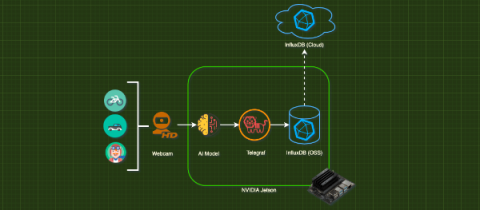Operations | Monitoring | ITSM | DevOps | Cloud
InfluxData
InfluxDB 3.0 vs ADX
Over the past few years, time series is one of the fastest growing database categories in the world. As more and more organizations realize how critical time series data is to their operations, more database options entered the market. InfluxDB has been the leading time series database for years, and with the release of InfluxDB 3.0, it remains at the vanguard of the time series world.
6 Project Ideas to Get Started with IoT
A look at the main things you need to consider when planning your IoT project with links to tutorials and source code. There’s a lot of stuff written about the Internet of Things (IoT) at a conceptual level that doesn’t really cover anything concrete. If you’ve ever wanted to get started on a real IoT project but didn’t know where to start, you are in the right place.
Metrics, Logs and Traces: More Similar Than They Appear?
This article was originally published in The New Stack and is reposted here with permission. They require different approaches for storage and querying, making it a challenge to use a single solution. But InfluxDB is working to consolidate them into one. Time series data has unique characteristics that distinguish it from other types of data. But even within the scope of time series data, there are different types of data that require different workloads.
OpenTelemetry Tutorial: Collect Traces, Logs & Metrics with InfluxDB 3.0, Jaeger & Grafana
Here at InfluxData, we recently announced InfluxDB 3.0, which expands the number of use cases that are feasible with InfluxDB. One of the primary benefits of the new storage engine that powers InfluxDB 3.0 is its ability to store traces, metrics, events, and logs in a single database. Each of these types of time series data has unique workloads, which leaves some unanswered questions. For example: Luckily this is where our work within OpenTelemetry comes into play.
InfluxDB V3 Python CLI and Client Library
Delete Without Deleting
Backfill Missing Time Series With SQL
Time series data streams are often noisy and irregular. But it doesn’t matter if the cause of the irregularity is a network error, jittery sensor, or power outage – advanced analytical tools, machine learning, and artificial intelligence models require their data inputs to include data sets with fixed time intervals. This makes the process of filling in all missing rows and values a necessary part of the data cleaning and basic analysis process.
Best Practices to Build IoT Analytics | InfluxData
This article was originally published in The New Stack and is reposted here with permission. Selecting the tools that best fit your IoT data and workloads at the outset will make your job easier and faster in the long run. Today, Internet of Things (IoT) data or sensor data is all around us. Industry analysts project the number of connected devices worldwide to be a total of 30.9 billion units by 2025, up from 12.7 billion units in 2021.











